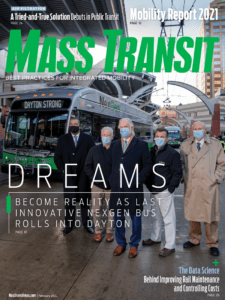Offering long-term training, mentoring and certifications for transit schedulers will help propel transit into the future and continue the industry’s evolution.
As a transit professional, have you ever really taken the time to understand what a transit scheduler actually does and their role in the organization? Most transit managers probably haven’t, but there are reasons they should. Some of the ingredients for this niche position are the ability to take criticism from all sides while blending an art, a science and a love of 4D puzzles, all the while transforming a myriad of data and information into a viable solution for customers, the operators responsible to deliver that service and the fiscal constraints of the organization.
It is hard to imagine in the 21st Century that there is no formal, standardized, ongoing training or certification processes (except for a great one-week course offered by the Canadian Urban Transit Association (CUTA) or potentially working with a consultant). The larger picture of training and support is really the issue at hand. Unlike other disciplines, there are no formally directed college education programs, yet it is a prime position responsible for the overall health of the operation.
The consensus from other professionals in the field is that it takes a new scheduler four to five years to become proficient under the right circumstances. The common misconception by many in the industry is the “anyone can do it” attitude. Some of this misconception may go back decades when most schedule makers were promoted from the ranks of the operations department. There were no college requirements a little over 35 years ago and the work was performed manually with paper and pencil and lots of trial and error. Back then, the job postings said in lieu of a degree, experience was acceptable.
Even with advances in technology, it is important to remember automated scheduling programs are a tool and in no way substitute for the experience and abilities of a good scheduler; rather the automated programs permit timely consideration and comparison of a greater number of alternative operating scenarios as specified by the scheduler, as well as providing input to a myriad of intelligent information systems and scheduling reports.
Consider that when the position is performed correctly, the same person must be able to:
- Understand and apply the constraints of the labor contract;
- Evaluate multiple routes, varying frequencies, varying running times, vehicle blocking, route interlining, work runcutting, rostering;
- Conform with the budget, its implications, operator staffing levels and vehicle availability; and
- Consider operator concerns, as well as the input from the passengers and service planners on service revisions.
If your scheduler is fortunate and your system is properly staffed, they might have a mentor or two to guide them during their initial training in the first few years. This is a position unlike most others and is the heart and soul of every agency. If you already understand this, then you are probably taking care of this position and have at least one person trained as a backup, and if not, the entire organization probably suffers.
If you advertise for any other position, anyone who went to college or a trade school will be at your doorstep, degree in hand. Many (almost all) applicants who apply for the scheduler position don’t understand what is being asked of them. Some may be forced into the position because of management’s lack of understanding and the challenge, no matter how you staff the position, is how to evaluate if the applicant possesses the ability to perform the job and provides you with the best solutions.
The endless question conveyed over and over again is, “How do you find a good scheduler?” Sometimes that question follows with the statement, “We have gotten stuck with someone who is not a good fit,” and that is an unfortunate situation for everyone involved. It is not always easy to recognize what the true problem is. The employee could be struggling to understand the scheduling process, the software or both. These problems are painful and costly for the agency both in subpar work and the employee’s wellbeing.
If you don’t think that scheduling is the heart of the agency, then consider how the work of creating a viable schedule has a direct impact on filling daily operator work assignments, along with operator call offs, which in turn impacts dispatch, supervision, human resources, maintenance, customer service and marketing. There are effects on the operating and capital budgets, planning and long-range planning with countless direct and indirect consequences. Find an agency that is struggling, and you will be amazed at the number of departments that have an issue with this one function.
To this day, many agencies, some of them the largest in the country (requiring more complicated understanding of scheduling and the software product), are staffed by individuals from the operating division who may or may not be around long term and there is a need for scheduling workforce succession planning. That is not to take anything away from the ability and understanding that these individuals possess, but to demonstrate that as the industry has evolved, the training for the scheduler position for the most part has remained static.
The CUTA Scheduling and Runcutting Beginner’s class is a great resource and opens new ways of understanding the process. But what happens after the class is finished? Can you imagine taking an introduction course to automobile engineering for one week and your boss expects you to design a car from top to bottom? One way to overcome this problem would be to have a sanctioned organization that would offer courses, mentoring and certifications for each step of development. Of course, that takes time and money but consider the cost to the overall agency if you don’t have someone with the right aptitude. To take mass transit into this modernized century and the future, we should all be mindful and concerned about how to get the best people in this position and elevate the position from the “anyone can do it” mentality by finding a way to offer long term training, mentoring and certifications, which will further enrich the industry to thrive and grow.
 Read the Mass Transit article online here or download a pdf.
Read the Mass Transit article online here or download a pdf.

